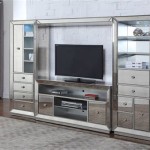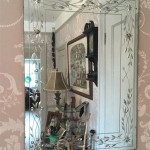Using Mirrors to Reflect Sunlight for Solar Panels
Harnessing solar energy through photovoltaic (PV) panels is a crucial aspect of the global transition towards renewable energy. While solar panels are inherently efficient at converting sunlight into electricity, their performance is directly influenced by the amount of sunlight they receive. Utilizing mirrors to reflect and concentrate sunlight onto solar panels offers a potential method for boosting energy output, particularly in regions with ample sunshine.
Increased Energy Production
The primary advantage of using mirrors with solar panels is the potential for increased energy production. By strategically positioning mirrors to redirect sunlight onto the panels, the intensity of light reaching the panel's surface is amplified. This increased irradiance can lead to a significant boost in electricity generation, especially during periods of lower solar intensity, such as early morning or late afternoon. The concentration of sunlight enables the panels to operate closer to their peak efficiency for a more extended period throughout the day.
Cost-Effectiveness and Reduced Land Usage
In some scenarios, using mirrors can be more cost-effective than simply installing more solar panels. By concentrating sunlight, fewer panels might be needed to achieve the desired energy output, reducing the overall capital expenditure. Furthermore, utilizing mirrors can minimize land usage. Concentrating sunlight allows for a smaller array of panels to generate the same amount of power, leaving more land available for other purposes.
Heliostat Technology and Tracking Systems
Advanced mirror systems, such as heliostats, employ sophisticated tracking mechanisms. These systems continuously adjust the mirrors' angles to follow the sun's path throughout the day, ensuring optimal reflection onto the target solar panels. This dynamic tracking maximizes the sunlight captured and further enhances the energy gain achieved through the mirrored reflection. The precision of these systems is essential for maximizing energy capture and avoiding wasted reflection.
Challenges and Considerations for Mirror Usage
While using mirrors offers potential benefits, certain challenges and considerations must be addressed. The reflectivity of the mirrors degrades over time due to environmental factors such as dust, dirt, and weathering. Regular cleaning and maintenance are essential to maintain optimal performance. Furthermore, the initial investment in mirrors and tracking systems can be substantial. A thorough cost-benefit analysis is crucial to determine the economic viability of mirror-enhanced solar panel systems. Improperly designed mirror systems can also lead to uneven light distribution on the panels, potentially causing hot spots and reducing efficiency or even damaging the panels. Careful design and installation are critical.
Types of Mirror Systems
Various mirror systems can be employed to enhance solar panel performance. Flat mirrors offer a simpler and more cost-effective solution, suitable for smaller-scale applications. Parabolic troughs utilize curved mirrors to concentrate sunlight onto a receiver tube containing a heat transfer fluid, which then generates electricity. Fresnel reflectors, consisting of a series of flat mirrors arranged in a parabolic shape, offer a compact and lightweight alternative to traditional parabolic troughs. Choosing the appropriate mirror system depends on factors such as scale, budget, and desired level of concentration.
Environmental Impact and Sustainability
The environmental impact of using mirrors with solar panels should also be considered. The production and disposal of mirrors require energy and resources. Life cycle assessments are necessary to evaluate the overall environmental footprint of these systems. Furthermore, the reflection of intense sunlight from large mirror arrays can create glare and potentially impact surrounding ecosystems. Careful site selection and environmental impact studies are essential to mitigate these potential effects. Sustainable material sourcing and responsible disposal practices are crucial for ensuring that the environmental benefits of solar energy are not offset by the impact of the mirror systems.
Integration with Existing Solar Installations
Integrating mirror systems with existing solar installations can be a viable approach to boost power output without requiring a complete system overhaul. Retrofitting existing arrays with strategically placed mirrors can provide a cost-effective way to enhance performance. However, careful analysis and design are crucial to ensure compatibility and avoid shading or interference with the existing panel layout. The integration process may require adjustments to the mounting systems, wiring, and potentially the inverter configuration to accommodate the increased energy input.
Can You Use Mirrors To Redirect Sunlight For Solar Panels Quora

How To Boost Any Solar Panel Output By 75

Can Mirrors Boost Solar Panel Output And Help Overcome Trump S Tariffs

Raising A Pv System S Yield By 20 With Mirror Reflectors International
Can Mirrors Increase The Efficiency Of Solar Panels Especially On Cloudy Days Quora
Can Mirrors Increase The Efficiency Of Solar Panels Especially On Cloudy Days Quora

As Mirrors Beam Light To Town Norwegians Share Patch Of Sun Npr

Solar Panel Diy Power Boost 30 From Mirror Panels

How To Boost Any Solar Panel Output By 75

Build A Heliostat For Solar Heating And Lighting Iwilltry Org








